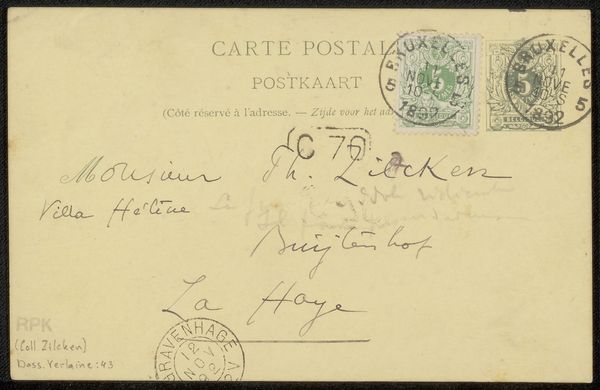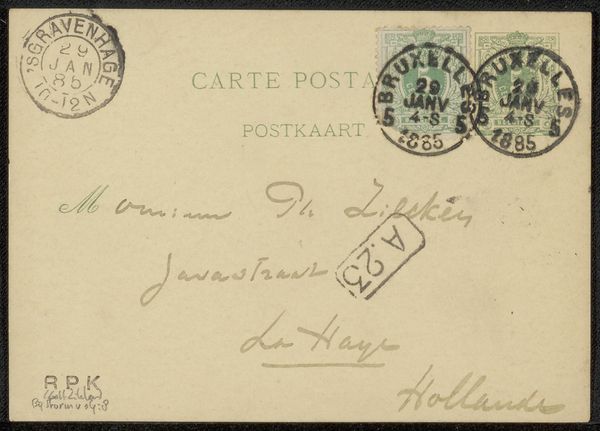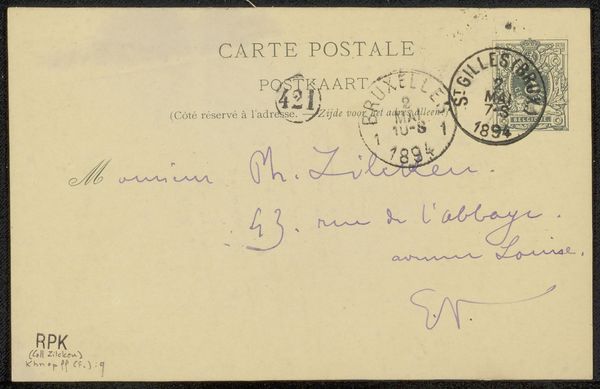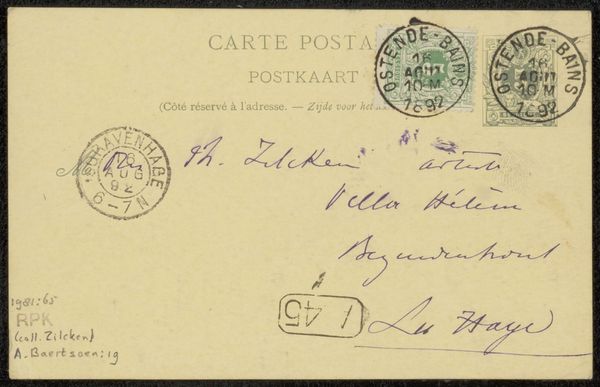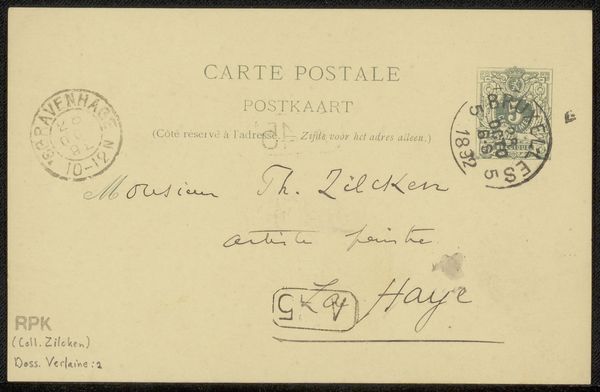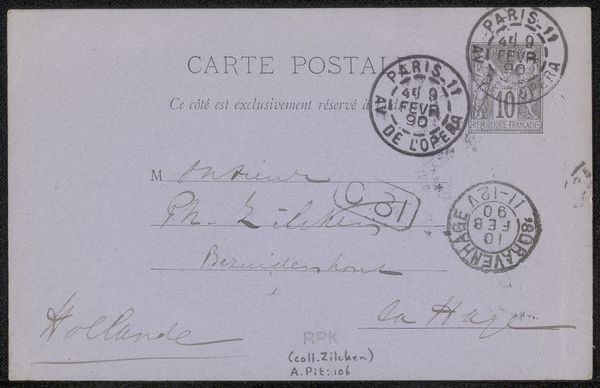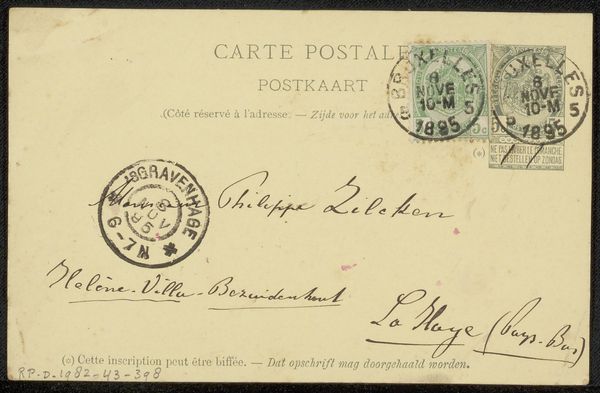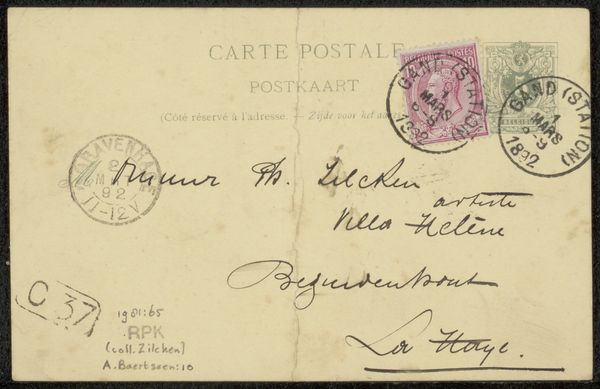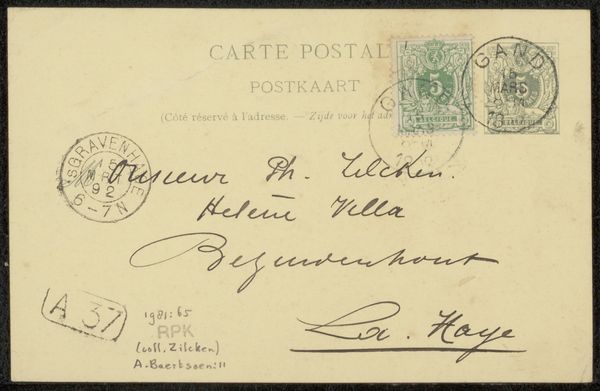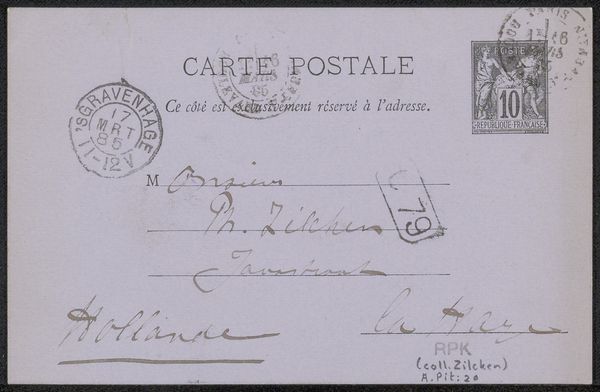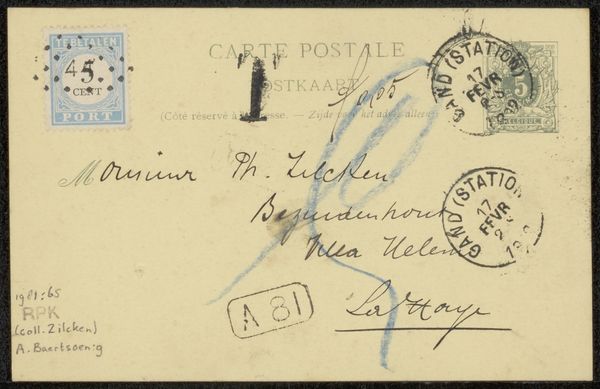
drawing, ink, pen
#
drawing
#
comic strip sketch
#
pen illustration
#
pen sketch
#
personal sketchbook
#
ink
#
ink drawing experimentation
#
pen-ink sketch
#
pen work
#
sketchbook drawing
#
pen
#
storyboard and sketchbook work
#
post-impressionism
#
sketchbook art
#
calligraphy
Copyright: Rijks Museum: Open Domain
This is the back of a briefkaart, or postcard, sent by Octave Maus to Philip Zilcken sometime around 1900. It’s made, obviously, of paper: industrially produced, then printed with the form for address and postage. But let's think about what this simple object tells us about the world it inhabited. The postal system itself was a key component of burgeoning capitalism, allowing messages, and therefore business, to travel efficiently. The handwritten address speaks to a level of personal connection, yet the printed elements signal standardization and mass communication. Even the stamps, small as they are, represent state power and fiscal control. Consider also the labor involved: from the papermakers and printers to the postal workers who handled this card. All of these things are easy to overlook, but crucial to understanding the social fabric of the time. So, even a humble postcard can be seen as a complex artifact, reflecting the material conditions and social relations of its era. By considering these factors, we can appreciate how thoroughly art and design are embedded in the wider world.
Comments
No comments
Be the first to comment and join the conversation on the ultimate creative platform.
